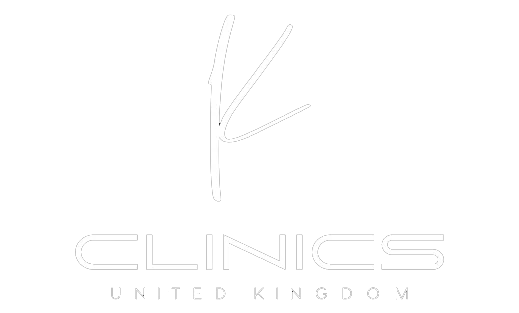Misaligned Bite and Headaches: Is There a Connection?

Do you often suffer from headaches without a clear reason? Do you wake up with neck- or headache or tense jaw muscles? Most of the time, we link these symptoms to cervical problems, stress or exhaustion, but some individuals are aware that a misaligned bite may be the underlying reason.
A misplaced bite has more than simply aesthetic consequences. Over time, it can lead to persistent headaches, jaw pain and also neck and shoulder discomfort by causing an imbalance in the muscles, joints and nerves of the face and jaw.
In this article, we explain the link between bite alignment and headaches, the symptoms to look out for, how diagnosis is performed, and modern treatment options.
A Misaligned Bite: What Is It?
The misalignment of the upper and lower teeth results in a malocclusion, or mismatched bite. Typical forms of biting issues consist of:
- Open bite – front teeth do not touch;
- Crossbite – one jaw overlaps the other;
- Deep bite: the upper teeth overly cover the lower ones;
- The misalignment of one jaw in relation to the other is known as overbite or underbite.
- Crowding or rotation of teeth, affecting occlusion
Despite the fact that this could appear to be a cosmetic problem, it results in pain and discomfort because it stresses the jaw joints and muscles, affects chewing mechanics and also distributes loads unevenly.
How Does a Misaligned Bite Cause Headaches?
The jaw is a component of a complex oral system that includes the temporomandibular joint (TMJ), the chewing muscles and the trigeminal nerve, which is important in face feeling and also pain perception.
When the bite is not positioned correctly:
- muscles work unevenly and become overstrained;
- tension, clicks, or pain due to the TMJ being overloaded or moved;
- Pain can be caused by irritation of the trigeminal nerve.
Tension-type headaches that radiate to the temples, back of the head, neck, or shoulders are frequently reported by patients with TMJ dysfunction.
Symptoms That May Indicate This Connection:
- persistent or recurrent headaches, particularly at the back of the head or temples;
- soreness or strain in the jaw when eating;
- clicking or popping in the jaw when opening the mouth;
- limited or irregular mobility of the jaw;
- inexplicable ear discomfort;
- bruxism, or nighttime teeth grinding;
- tooth fractures, cracks, or deterioration of the enamel;
- headache-related stress in the shoulders or neck.
How Is the Connection Diagnosed?
At KClinics, we employ a thorough diagnostic process that consists of:
- Clinical Orthodontic Assessment
We evaluate the bite, facial symmetry, TMJ function, gum health, enamel wear, and indications of muscle overload. Jaw movement and joint noises are also assessed.
- Orthopantomogram (Full-Jaw X-ray)
Provides a complete view of the tooth and bone structure, detects anomalies, inflammation, or damage to the jaw.
- TMJ CT or MRI
Shows the disc’s health, the joint’s overall health, and any indications of wear, inflammation, or misalignment.
- Diagnostics of Myofunctional
To identify dysfunction, we measure muscular strength and coordination, particularly in the mouth, cheeks, neck, and lower face muscles.
- Recommendations to Relevant Experts
Neurologists, osteopaths or physiotherapists may be also recommended to confirm or exclude other causes of chronic pain and headaches.
What Treatment Options Are Available?
Your orthodontist will create a customized plan based on the diagnosis, which might include:
- Treatment with orthodontics
The TMJ and facial muscles are relieved of tension when misalignment is corrected and bite balance is restored using braces or transparent aligners (Invisalign-type devices).
- Myofunctional Therapy
A series of exercises to strengthen the muscles of the face, neck, and tongue, enhancing coordination and lowering stress.
- Night Guards for Bruxism
These specially designed guards prevent tooth grinding and lessen muscular strain while you sleep.
- Botulinum toxin (Botox)
Injections relax hyperactive jaw muscles and relieve chronic spasms or tension headaches.
- Osteopathy and Physiotherapy
To restore functional harmony in the TMJ, manual treatments, massages, jaw mobilization and stimulation therapy are employed.
Why You Shouldn’t Ignore the Symptoms?
Over time, even a small biting misalignment might result in:
- persistent headaches that resemble migraines;
- accelerated enamel wear;
- TMJ conditions, such as restricted opening or jaw locking;
- postural problems and neck muscular tightness;
- sleep issues and general exhaustion.
Timely treatment helps eliminate the root cause — not just mask the pain.
In conclusion
Headaches aren’t always “just in your head” — they can originate from your bite and jaw alignment. It is worthwhile to see a dentist who specializes in occlusion and TMJ health if you frequently have jaw or face stress, popping sounds in the TMJ, or inexplicable headaches.
In addition to providing a thorough treatment plan that includes everything from night guards and orthodontics to botox and physiotherapy, KClinics provides comprehensive diagnostics of the bite, muscles, and joints. We help you live pain-free, not only restore teeth.



